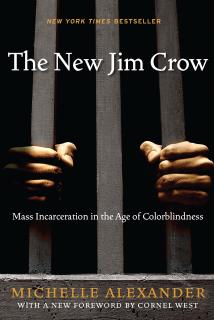Advertisement

The 2012–13 Unitarian Universalist Association Common Read is The New Jim Crow: Mass Incarceration in the Age of Colorblindness by Michelle Alexander (The New Press, 2012). Alexander, an attorney who is a civil rights advocate and litigator, asserts that crime-fighting policies and systems in the United States, such as the “war on drugs” and the incarceration system, disproportionately and intentionally affect Americans of color. She describes multifaceted, lifelong discrimination and disenfranchisement that affect people who are branded “felon.”
A UUA Resource Development Office discussion guide (PDF) provides a framework for reflecting on and responding to the book. Here is an excerpt from one of the discussion guide’s exercises:
When the system of mass incarceration collapses (and if history is any guide, it will), historians will undoubtedly look back and marvel that such an extraordinarily comprehensive system of racialized social control existed in the United States. How fascinating, they will likely say, that a drug war was waged almost exclusively against poor people of color—people already trapped in ghettos that lacked jobs and decent schools. They were rounded up by the millions, packed away in prisons, and when released, they were stigmatized for life, denied the right to vote, and ushered into a world of discrimination. Legally barred from employment, housing, and welfare benefits—and saddled with thousands of dollars of debt—these families were shamed and condemned for failing to hold together their families. They were chastised for succumbing to depression and anger, and blamed for landing back in prison. Historians will likely wonder how we could describe the new caste system as a system of crime control, when it is a system better designed to create—rather than prevent—crime. (The New Jim Crow, page 175)
Invite each participant to share a story from their life experience, or a story they have read and/or heard that points to the existence of a racialized caste system in the United States, enforced through the legal and law enforcement mechanisms that support the “war on drugs.” Allow two or three minutes for participants to consider their responses, and then ask them to share, one at a time, without interruption. If there is time, invite participants to respond to what others have shared. Remind them that the group has covenanted to speak from personal experience and perspectives, rather than challenging the validity of another’s experiences and perspectives.
The complete discussion guide is available at UUA.org/commonread. Group discounts on this title are available at UUAbookstore.org.
This article appeared in the Winter 2012 issue of UU World (page 58).
Related Resources
- The New Jim Crow: UUA Common Read.Resources, including a discussion guide, for the Unitarian Universalist Association’s 2012–2013 Common Read. (UUA.org)
- The New Jim Crow: Mass Incarceration in the Age of Colorblindness by Michelle Alexander. By Michelle Alexander. The New Press, 2012. (UUA Bookstore)